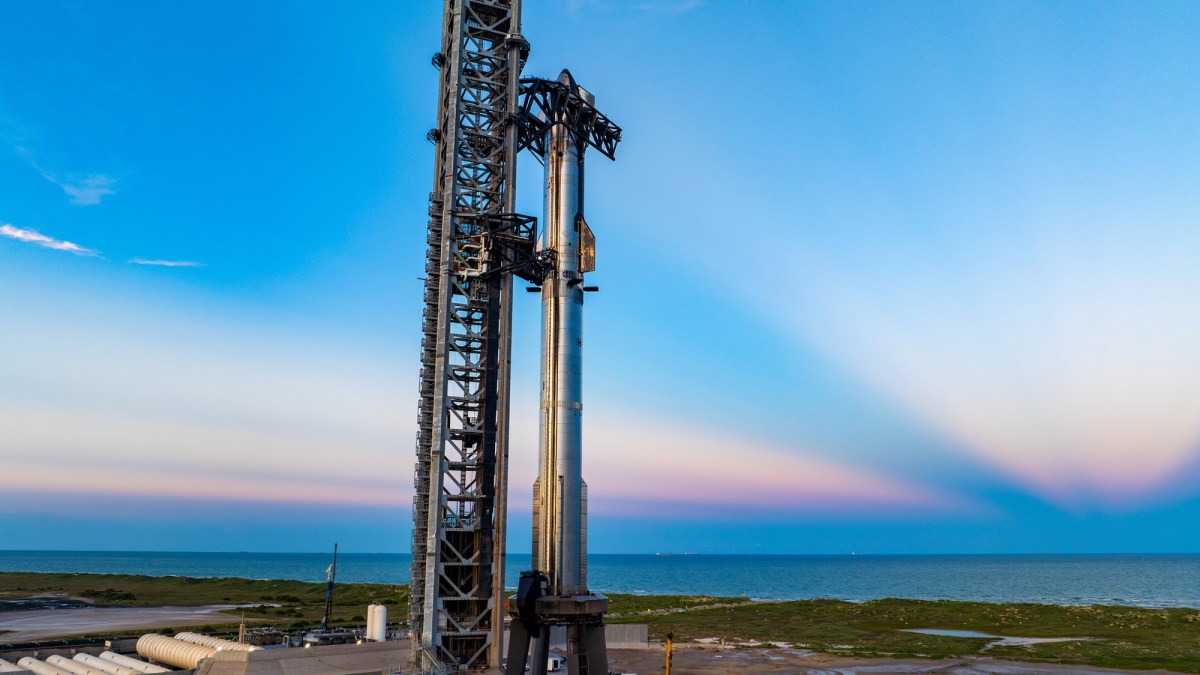Updated 9 p.m. Eastern with Gerstenmaier comments.
WASHINGTON — As SpaceX prepares for the test flight of its Starship vehicle, NASA is closely watching as it waits for the company to achieve the next milestones on development of the lunar lander version of the vehicle.
SpaceX announced late Oct. 7 that it was preparing to launch Starship on its fifth integrated test flight as soon as Oct. 13, pending regulatory approval. The mission will be similar to the fourth mission in June, with the Starship upper stage flying a suborbital trajectory targeting a splashdown in the Indian Ocean.
A key difference, though, is that the Super Heavy booster will attempt to return the Starbase launch site at Boca Chica, Texas. That would allow the launch tower to “catch” the booster with a pair of mechanical arms and set it down on the launch mount. That is a key element of SpaceX’s long-term plans to enable rapid reuse of the vehicle.
“Thousands of distinct vehicle and pad criteria must be met prior to a return and catch attempt of the Super Heavy booster, which will require healthy systems on the booster and tower and a manual command from the mission’s Flight Director,” the company stated. If those conditions are not met, the booster will instead splash down in the Gulf of Mexico.
Speaking at an Oct. 9 meeting of the National Academies’ Committee on Biological and Physical Sciences in Space, Bill Gerstenmaier, SpaceX vice president for build and flight reliability, expressed optimism that the booster could make it back for a catch by the launch tower. “We landed with half a centimeter accuracy in the ocean” on the previous flight, he said, “so we think we have a reasonable chance to go back to the tower.”
The timing of the launch took many by surprise, as the Federal Aviation Administration had previously informed SpaceX, and publicly stated, that it would not be ready to issue a launch license until late November, citing changes in the mission profile from previous flights. That prompted criticism from the company and its chief executive, Elon Musk, as well as industry groups and supporters in Congress.
An FAA official said in September that the schedule for the Starship launch license was driven by an environmental review, a process that requires coordination with other agencies. The FAA noted that SpaceX provided information only in mid-August about how the changes in the flight profile resulted in environmental impacts that “cover a larger area than previously reviewed.”
“In mid-August, SpaceX submitted new information for its proposed Starship/ Super Heavy Flight 5 mission,” the FAA said in an Oct. 8 statement. “The FAA is continuing to review this information. The FAA will make a licensing determination once SpaceX has met all licensing requirements.” Unlike previous FAA statements, though, the latest one did not mention a late November schedule, or any other date, for making that license determination.
Industry sources state that the interagency review process has gone faster than expected, which could allow the licensing process to be completed by the end of the week. There is no guarantee, though, that it would be ready in time to support an Oct. 13 launch attempt.
Speaking at an Oct. 9 meeting of the National Academies’ Aeronautics and Space Engineering Board, Lori Glaze, acting deputy associate administrator in NASA’s exploration directorate, said the agency was “really looking forward” to the Starship flight, adding that it could happen “as early as next week” based on SpaceX comments.
NASA’s interest in Starship is linked to its use as a lunar lander for the agency’s Human Landing System (HLS) program, with the lander planned for use on the Artemis 3 mission. “There’s no doubt that the Human Landing System is the critical path for Artemis 3,” she said.
The next “really big” milestone for Starship HLS development is performing a propellant transfer demonstration in orbit, as SpaceX will establish a propellant depot in Earth orbit supplied by multiple Starship launches before the depot then fuels the Starship lander for its journey to the moon. “We’ve got to be able to demonstrate that they can do that effectively and that they understand any nuances associated with that,” she said.
Linked to that is the rate at which SpaceX can launch “tanker” Starships to fill the depot. “The pacing item is the rate at which SpaceX can launch the systems that can fuel the depot,” she said. She said NASA saw “good progress” towards that rate because its construction of a second launch tower at Starbase and the ability to “hopefully” launch from Florida.
Glaze also cited the efforts by SpaceX to recover and reuse the Super Heavy booster, which the company will test on the upcoming launch. She said the company originally planned to test the Super Heavy booster landing on its sixth test flight but moved it up to the fifth flight. “That’s part of the challenge in trying to get to this Flight Test 5.”
Members of the committee raised concerns about the “enormous” number of launches that may be required to full the depot, with one member estimating 35, a figure far higher than what NASA or SpaceX officials have publicly stated. Glaze did not offer a number of Starship launches required for an HLS mission. Gerstenmaier said SpaceX expects “to do like 16 propellant transfers” for a lunar mission.
“We’ve all been watching SpaceX. They work a little differently from traditional industry,” she said. “We’re all keeping an eye on the progress as they continue development.”
